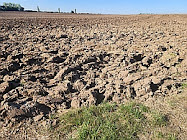The Rough Guide to Hell
 |
| Pandemonium |
This is an introduction to my short series of posts what Hell was though to look like.
I like to write about places, mostly real but sometimes imaginary. When we think about them, the distinction between the two blurs. What would Tintagel mean without Arthur, Dedham Vale without Constable or, further afield, Olympus without gods?
These relationships change over time. Now, in a world increasingly defined by technology, dreams inhabit landscapes shaped by science fiction, fantasy or escapism. I haven’t a clue what people dreamed of in medieval times but would bet that their hopes and fears were far more influenced by their relationship with the almighty and that heaven and hell were very real to them. We haven’t quite shaken that off. Centuries later Ian Paisley was stoking the same hellfire from his pulpit in Antrim.
Disclaimer. I am no scholar and these three were far from the only ones posting stuff on ye olde social media. My goal is simply to enjoy their deranged imaginings from the comfort of my perch in our supposedly more enlightened civilisation.
Dante was writing in Italy in medieval times and the attraction was that his ‘Divine Comedy’ takes us on a tour of the place, so the plot is a lot easier to follow than some of his translated prose! In contrast, some roughly contemporaneous and more local godly works, such as Langland’s Piers Plowman, are more like tales than travel guides.
 |
| Danté |
Bosch painted in Flanders a century or so later. Religious themes dominated art at the time, but he was out on his own at the freakish end of the spectrum. My interest here was piqued by his view of life and the afterlife in a ‘Garden’ setting for a carnival of ghoulish debauchery and its consequences. As far as I know, there are no portraits of Bosch. But maybe it is his face peeping out from his painting.
 |
| Bosch? |
Scroll forward 200 years to meet John Milton in his cottage in Chalfont St Giles where he is finishing off his multi-part epic poem ‘Paradise Lost’. Books 1 & 2 are located in hell, and he gives you a great ‘scratch and sniff’ feeling for the atmosphere of the place as a backdrop to a cracking yarn. Even so, he is no geographer and seems to lose interest in the scenery altogether when he gets to the Garden of Eden and Paradise. Seen one host of angels on a heavenly cloud, seen ‘em all. So my post includes pics of the illustrations later provided by John Martin, otherwise a painter of vast mythical landscapes and whose idea of landscape is very much my idea of landscape. Luscious. His 'Pandemonium' is the heading photo for this post.
 |
| Milton |
It is useful to keep in mind how the world itself was seen at the time. Danté was a contemporary of Marco Polo, whose ‘travels’ overland in the East seemed to be a mixture of adventure, hearsay and invention. By Bosch’s time, the Americas had been discovered if not explored and Portuguese navigators were venturing into the expanse of the eastern oceans and their littorals. Traders followed, maps replaced myths and Milton could fill his poem with allusions to places that were known but still seemed magical.
 |
| Descelier's Map of the World 1546 |
The progressive widening of the boundaries and moving from speculation to knowledge is not unlike the much shorter progression of man’s forays into space. I wonder if a writer in the future might place hell on Venus, where the surface is hot enough to melt lead, volcanoes abound and the poisonous sky has clouds of sulphuric acid?
 |
| A Postcard from Venus |
Link Article
Frankly, none of them pays as much attention to the settings as I had hoped. But then, neither did Marco Polo. Rather, their interest is in the heaving, roiling cast of countless sinners and sufferers and their tribulations and tortures. But the distinction between the souls and the hell they inhabit has been crushed with all the certainty of a melon sinking into a cosmic black hole. In the end, ceasing to be perceived as individuals, they become an inextricable part of the scenery in much the same way as people do in any description of our inhabited landscape.




Comments
Post a Comment
You can leave a message here or email me :
mail@mickbeaman.co.uk